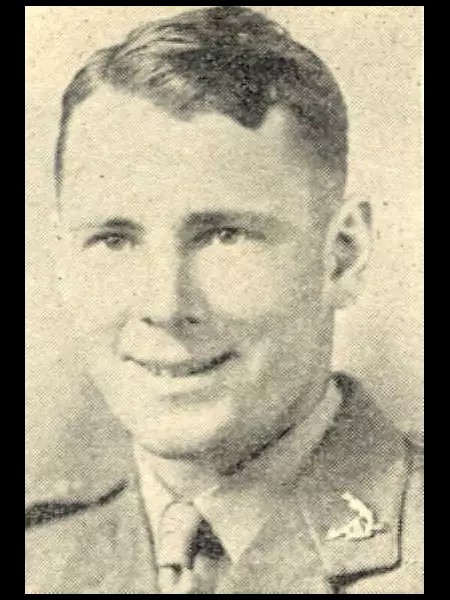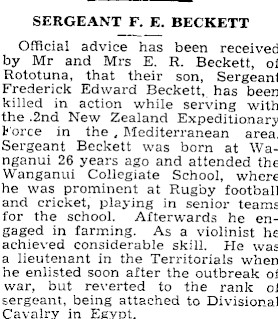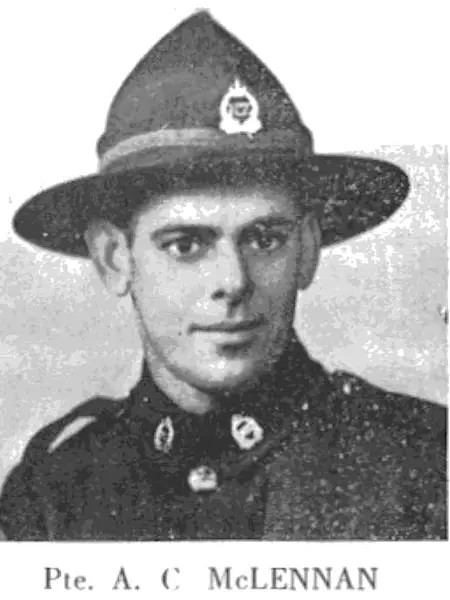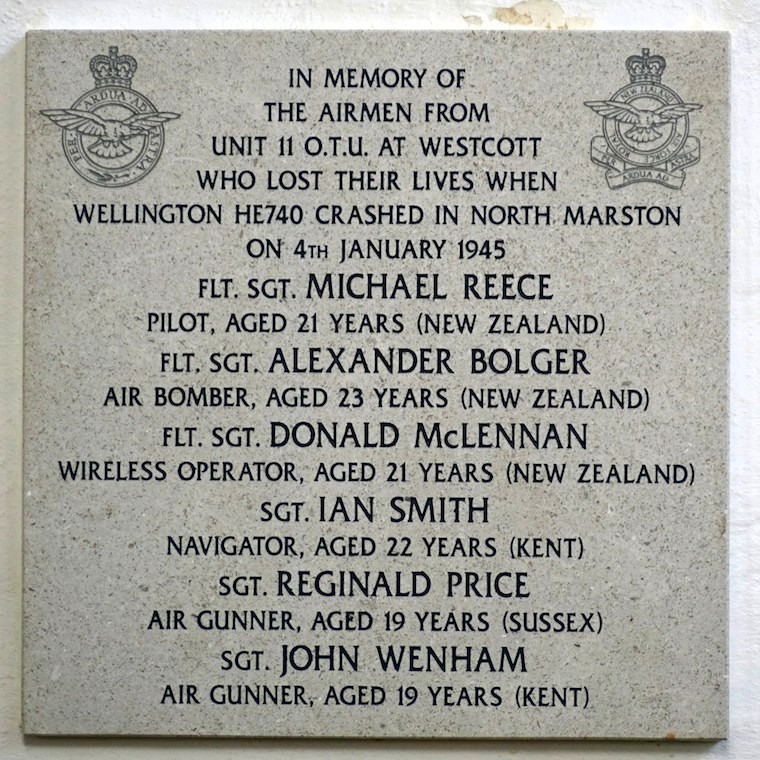Puketaha District War Memorial 1939-1945

Throughout the length and breadth of New Zealand there are memorials to remember those that served their country and those who died for their country during the two world wars of the 20th century.
Here is a brief account of the three men whose names appear on the Puketaha District Roll of Honour and perished during WW2.
(There were, sadly, other causalities from the district during both World Wars. In most cases they are remembered on the Hamilton War Memorial wall or at the Gordonton Memorial)
______________________
Frederick Edward Beckett (1916 – 15 December 1943)

Service Number: 234294
Rank: Trooper
New Zealand Armoured Corps
The Beckett family originally from Whanganui were farming in the Greenhill Road now known as Pukeroa Road on outskirts of Hamilton at the outbreak of WW2.
Frederick Beckett was a part of the 10th reinforcements of the Second New Zealand Expeditionary Force. (2NZEF) He left NZ on the 22nd July 1943 arriving in Egypt (Maadi Camp) on the 18th August 1943.
In October 1943 his unit of the 2NZEF landed in Italy as a part of the Allied push to capture Rome. The 2NZEF’s first offensive in Italy was to break through the ‘Winter Line’ by crossing the Sangro River to take the German stronghold of Orsogna. Initially progress was good but ultimately the Germans were unyielding and there were heavy losses amongst the New Zealanders.
The ‘Winter Line’ was collective name given to the German defensive line that crossed the width of Italy. In the west, near Monte Cassino, it was known as the ‘Gustav Line’. On the eastern side of Italy, near Orsogna, it was known as the ‘Bernhardt Line’
With questionable Allied strategy, difficult terrain, fierce German resistance and atrocious weather it turned out to be the winter from hell for all those involved.
Frederick Edward Beckett was only 27. He is remembered on the memorial wall at the Cassino Cemetery and at the Hamilton Memorial Park.

Footnote. Some of the fieriest combat battles of WW2 took place during during the Italian campaign. It only got worse when Allied troops tried to take Monte Cassino in early 1944. Though ultimately successful, the cost in human lives was horrendous. Some historians compare the carnage of the Italian campaign to the trench warfare of WW1.
Further reading: “A Bloody Road Home – World War Two and NZ’s Heroic Second Division” by Christopher Pugsley (pub 2014)
The McLennan Brothers: Angus & Donald McLennan
At the time of writing I’m usure where the McLennan family lived, farmed or worked in the Puketaha District other than that Donald McLennan worked on the Cleland farm. Their father John Thomas McLennan appears on the 1943 Electoral Roll as living in Puketaha but no address! His occupation is described a ‘Farm Hand'.
The McLennan family originally arrived in NZ in the 1850s and established themselves in a place called Kaurihohore, north of Whangarei.
Angus Colin McLennan (1915 - 9th December 1941)
Service Number: 23586
Rank: Private
21 (Auckland) Infantry Battalion
Private Angus McLennan was a part of the ill fated Crete campaign. He was taken prisoner on the 12th September 1941.
On the 8th December 1941 along with 2000 other POWs he boarded the ship ‘Sebastiano Venier’ (formerly known as the ‘Jason’) to be transferred to Axis POW camps in Italy.
The ‘Sebastiano Venier’ while crossing the Mediterranean near Greece ran into the path of a Royal Navy submarine called the HMS Porpoise. At 2.35pm and five kms off the Greek coast the HMS Porpoise fired the first of four torpedoes hitting the ship below its water line. The resulting explosion caused the instant death of 400/500 POWs including 45 New Zealanders.
Angus Colin McLennan was 26 and married. Presumed lost at sea he is remembered on the Alamein Memorial at the El Alamein War Cemetery in Egypt and also at the Hamilton Memorial Park.
Footnote: The Captain and some of crew abandoned the ship after the first torpedo hit leaving the boat in command of a German engineer. He successfully beached the ship before it sank, however, this resulted in the loss of more POW lives.
Reputedly, the Italian captain was later found and shot.
It is unclear why British Intelligence did not make the Porpoise aware that the ‘Sebastiano Venier’ was carrying Allied POWs. In January 1945 HMS Porpoise was sank by the Japanese with total loss of life
Further reading: “No Honour No Glory", was published in 1983 by, New Zealanders, Spence Edge(He was a POW on the ship) and Jim Henderson.

Donald Wilford McLennan (1923 - 4th January 1945)

Service Number: 427046
Rank: Flight Sergeant
Royal NZ Air Force No. 11 Operational Training Unit
Donald McLennan was working for Harold Cleland on Sainsbury Road when he made his application, on the 22 April 1942, to join air crew training in the NZ Air Force. He officially enlisted in July 1942.
I should mention Harold Cleland’s oldest son Sefton Cleland was killed in 1944 during the Italian campaign and is remembered at the Gordonton Memorial.
Donald McLennan’s initial training was done in Canada. In May/June of 1944 he was posted to England to join the Bomber Command Operational Training Unit at the RAF base at Westcott having attained the rank of Flight Sergeant.
On a bitterly cold evening on the 4th January 1945 Flight Sergeant Don McLennan, wireless operator, took off on a routine training exercise aboard the Wellington Bomber HE740. It was piloted by fellow New Zealander, Flight Sergeant Michael Reece, aged 21. Another New Zealander, Flight Sergeant Alexander Bolger, aged 23 was also a part of the six man crew. His job was ‘bomb aimer’. His job would have to been to target and release bombs.
In cloud, at 5000ft , the plane went out of control and dived into the ground catching fire. All six crew members died. The plane had crashed into open field narrowly missing the small village of North Marston.
As there were no survivors and no official investigation due to it being war time the true cause of the accident was never established. It is believed the crash was probably caused by a combination of failures.
A quote from the booklet ‘Six Young Lives’ published by the North Marston History Club in 2015 perhaps does give a hint of what could have gone wrong.
“However, in the last seventy years, as the science of accident investigation has developed, we have come to understand that accidents are rarely caused by one mistake, one environmental problem or one technical failure. It often requires a combination of events, usually enough to overcome a person or team’s training, experience or even their understanding to create such a disaster”
The average age of the crew was just 21.
Flight Sergeant Donald McLennan was 22 and engaged to a Canadian girl. He is buried along side four of the crew at the Botley Cemetery in Oxford.
Footnote: The North Marston History Club has gone to considerable effort to remember and commemorate the six men who died in the crash by placing a plaque in the North Marston village in their honour.

A moving tribute video of this event in 2015 can be viewed on You Tube : It is called:
Six Young Lives:
https://www.youtube.com/watch?v=vnJdCiV5gLI&t=114s
(you may have to copy & paste)
Anyone interested in finding out more can visit the North Marston History Club website at:
https://northmarstonhistory.org.uk/ (under: Projects and Publications)
You will find more information about this tragic accident including the stories:
Wellington Bomber HE740 - North Marston’s Wartime Tragedy and an article titled: Some Corner of an English Field. (This article was published in the NZ magazine ‘North & South’ in April 2018)
